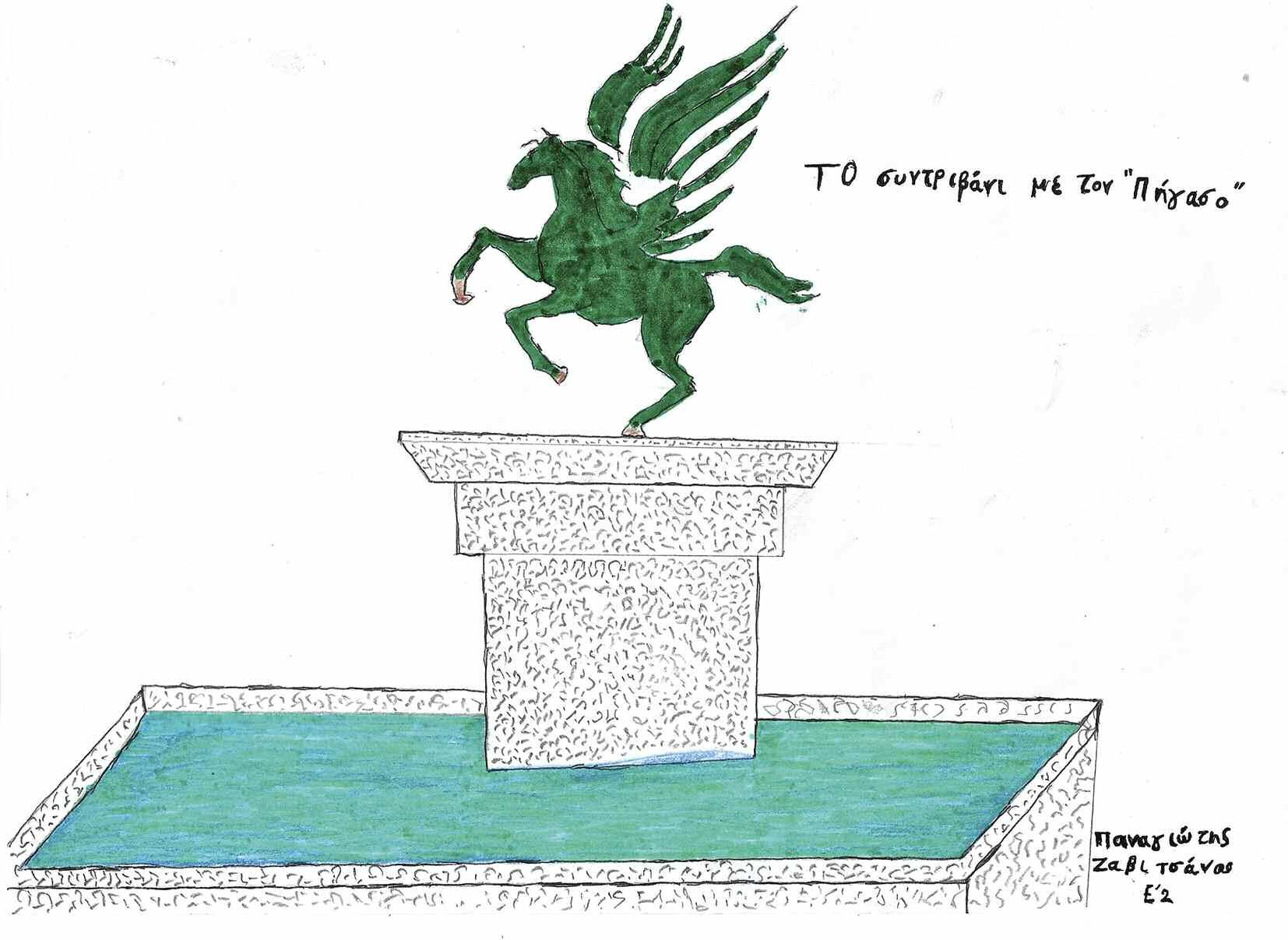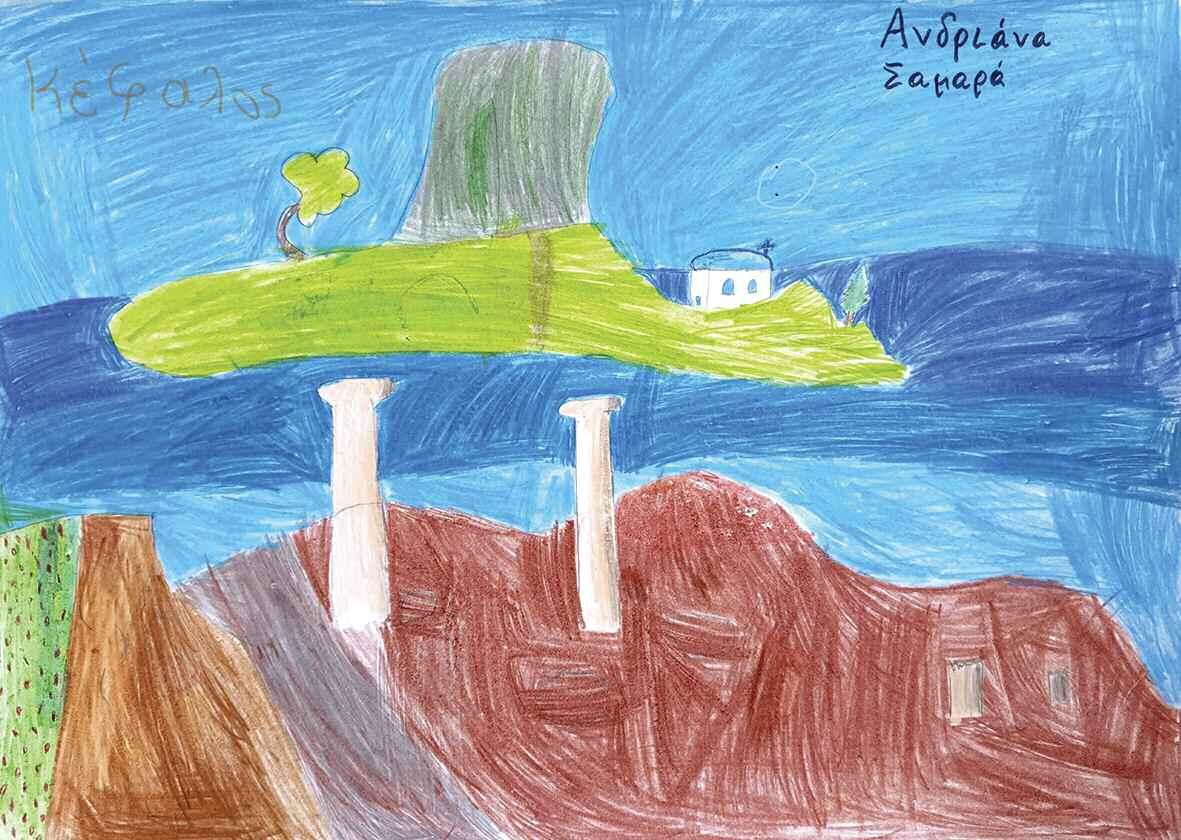
3 minute read
✔ Kalavarda (Rhodes), our area page 14 -15 ✔ Corinth, our area page 16

cultural heritage. It has collections from the early 19th to the mid-20th century.
Advertisement
There are women's and men's costumes from many parts of Greece, embroidery and woven, works of goldsmithing, metalwork, wood carving as well as agricultural tools and household utensils. Goldie Harlafti – 5th
Corinth
The city of Corinth has a long history where its formation is identified around 3000 BC. and consisted of a very powerful city-state.
Ancient Corinth was built at the base of the Acrocorinth, overlooking the Corinthian Gulf. The Corinthians were the first to build the wellknown to us “triremes” .
Corinth withapproximately 30,200 populationis the capital of the prefecture (Corinthia) located in the geographical region of Peloponnese. The city has been built with modern anti-seismic standards after it was levelled an earthquake in 1858. The Cathedral of Apostle Paul is placed near the city center.
At the east of our city, near the ends of Corinth Canal which has been built in 1881, there are two submersible bridges.
Corinth has easy access to Athens, Greece’s capital, either by highway or by suburban railway. The symbol of the city,Pegasus, the winged horse of Greek mythology, stands in the main square.
There are numerous squares where the young and old can please themselves and many sidewalks have been created which makes our strolls easier!
Various buildings - some older and some newer - adorn the city. The pupils of E2 Grade of the 10th Primary School of Korinthos Teacher in Charge: Nikolaos Dimitriou Stavros Panagiotou -
Teacher of English - 10th
Primary School of Corinth



C Cos, , o our is sla and
We are the students of the fifth grade of the 1st Primary School of Kos and we welcome you to our island! Through this article we would like to guide you to our homeland!
Geographical position:
Our island is located in the southeastern Aegean and belongs to the island complex of the Dodecanese.
Journey into history:
The history of Kos begins in the 3rd century BC., when its Ancient Agora dates back. It had an area of about 12,000 sq.m. and was the social and commercial center of the inhabitants.
Then we would like to introduce you to a great man born in Kos in 460 BC, Hippocrates. He is considered the father of Medicine because he is the first doctor who divided this science into specialties. So the oath of Hippocrates is the oath taken by doctors even today.
According to tradition, Hippocrates, next to the ancient market, planted a plane tree, which still exists, and taught medicine under its shade. Hippocrates also taught at the school he founded in the area of the Asclepieion. The Asclepieion was the temple of the god Asclepius and the largest sanatorium in Ancient Greece.
Our journey continues in Roman times, as Kos was under Roman rule. Since that time is the famous Roman Conservatory with its 12 stands and vaulted galleries, as well as the Roman house, which consists of 36 rooms and 3 open spaces.
Did you know that Knights also visited Kos? Of course, they did not come only as visitors, having stayed here for about 200 years. They built the big castle of the island, which is known as the Castle of Nerantzia.
And we reach 1522, when Kos was conquered by the Ottomans. At least two mosques were built during Ottoman rule: the Loggia Mosque next to the Hippocratic plane tree and the Deftendar Mosque in Freedom Square. They operated until the earthquake in 2017.
In recent years, specifically in 1912, Kos came under the occupation of the Italians. During this period, many buildings designed by Italian architects, such as the District and the Archaeological Museum were built.
Most of the monuments we mentioned are located around the central square of Kos, Eleftherias Square, which was also formed during the Italian occupation.
And our school was originally housed in an Italian school. In 1947, with the integration of Kos into Greece, it became the first Greek school on the island, which is why it was named the 1st Primary School. In 2008, the new building was created in the area of Kako Prinari.



